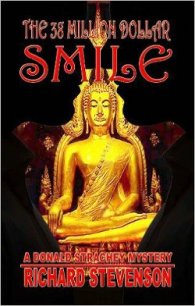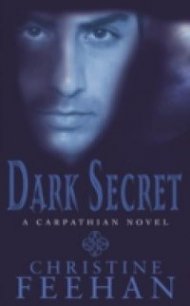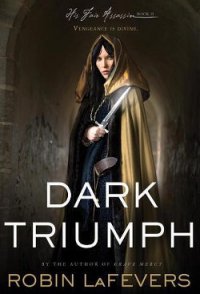Congo - Crichton Michael (книги регистрация онлайн бесплатно .TXT) 📗
On a map the Great Rift depression was marked by two features: a series of thin vertical lakes-Malawi, Tanganyika, Kivu, Mobutu-and a series of volcanoes, including the only active volcanoes in Africa at Virunga. Three volcanoes in the Virunga chain were active: Mukenko, Mubuti, and Kanagarawi. They rose 11,000- 15,000 feet above the Rift Valley to the east, and the Congo Basin to the west. Thus Virunga seemed a good place to look for diamonds. Her next step was to investigate the ground truth.
“What’s ground truth?” Peter asked.
“At ERTS, we deal mostly in remote sensing,” she explained. “Satellite photographs, aerial run-bys, radar side scans. We carry millions of remote images, but there’s no substitute for ground truth, the experience of a team actually on the site, finding out what’s there. I started with the preliminary expedition we sent in looking for gold. They found diamonds as well.” She punched buttons on the console, and the screen images changed, glowing with dozens of flashing pinpoints of light.
“This shows the placer deposit locations in streambeds near Virunga. You see the deposits form concentric semicircles leading back to the volcanoes. The obvious conclusion is that diamonds were eroded from the slopes of the Virunga volcanoes, and washed down the streams to their present locations.”
“So you sent in a party to look for the source?”
“Yes.” She pointed to the screen. “But don’t be deceived by what you see here. This satellite image covers fifty thousand square kilometers of jungle. Most of it has never been seen by white men. It’s hard terrain, with visibility limited to a few meters in any direction. An expedition could search that area for years, passing within two hundred meters of the city and failing to see it. So I needed to narrow the search sector. I decided to see if I could find the city.”
“Find the city? From satellite pictures?”
“Yes,” she said. “And I found it.”
The rain forests of the world had traditionally frustrated remote-sensing technology. The great jungle trees spread an impenetrable canopy of vegetation, concealing whatever lay beneath. In aerial or satellite pictures, the Congo rain forest appeared as a vast, undulating carpet of featureless and monotonous green. Even large features, rivers fifty or a hundred feet wide, were hidden beneath this leafy canopy, invisible from the air.
So it seemed unlikely she would find any evidence for a lost city in aerial photographs. But Ross had a different idea: she would utilize the very vegetation that obscured her vision of the ground. -
The study of vegetation was common in temperate regions, where the foliage underwent seasonal changes. But the equatorial rain forest was unchanging: winter or summer, the foliage remained the same. Ross turned her attention to another aspect, the differences in vegetation albedo.
Albedo was technically defined as the ratio of electromagnetic energy reflected by a surface to the amount of energy incident upon it. In terms of the visible spectrum, it was a measure of how “shiny” a surface was. A river had a high albedo, since water reflected most of the sunlight striking it. Vegetation absorbed light, and therefore had a low albedo. Starting in 1977, ERTS developed computer programs which measured albedo precisely, making very fine distinctions.
Ross asked herself the question: If there was a lost city, what signature might appear in the vegetation? There was an obvious answer: late secondary jungle.
The untouched or virgin rain forest was called primary jungle. Primary jungle was what most people thought of when they thought of rain forests: huge hardwood trees, mahogany and teak and ebony, and underneath a lower layer of ferns and palms, clinging to the ground. Primary jungle was dark and forbidding, but actually easy to move through. However, if the primary jungle was cleared by man and later abandoned, an entirely different secondary growth took over. The dominant plants were softwoods and fast-growing trees, bamboo and thorny tearing vines, which formed a dense and impenetrable barrier.
But Ross was not concerned about any aspect of the jungle except its albedo. Because the secondary plants were different, secondary jungle had a different albedo from primary jungle. And it could be graded by age: unlike the hardwood trees of primary jungle, which lived hundreds of years, the softwoods of secondary jungle lived only twenty years or so. Thus as time went on, the secondary jungle was replaced by another form of secondary jungle, and later by still another form.
By checking regions where late secondary jungle was generally found-such as the banks of large rivers, where innumerable human settlements had been cleared and abandoned-Ross confirmed that the ERTS computers could, indeed, measure the necessary small differences in reflectivity.
She then instructed the ERTS scanners to search for albedo differences of.03 or less, with a unit signature size of a hundred meters or less, across the fifty thousand square kilometers of rain forest on the western slopes of the Virunga volcanoes. This job would occupy a team of fifty human aerial photographic analysts for thirty-one years. The computer scanned 129,000 satellite and aerial photographs in under nine hours.
And found her city.
In May, 1979, Ross had a computer image showing a very old secondary jungle pattern laid out in a geometric, gridlike form. The pattern was located 2 degrees north of the equator, longitude 3 degrees, on the western slopes of the active volcano Mukenko. The computer estimated the age of the secondary jungle at five hundred to eight hundred years.
“So you sent an expedition in?” Elliot said.
Ross nodded. “Three weeks ago, led by a South African named Kruger. The expedition confirmed the placer diamond deposits, went on to search for the origin, and found the ruins of the city.,,
“And then what happened?” Elliot asked.
He ran the videotape a second time.
Onscreen he saw black-and-white images of the camp, destroyed, smoldering. Several dead bodies with crushed skulls were visible. As they watched, a shadow moved over the dead bodies, and the camera zoomed back to show the outline of the lumbering shadow. Elliot agreed that it looked like the shadow of a gorilla, but he insisted, “Gorillas couldn’t do this. Gorillas are peaceful, vegetarian animals.”
They watched as the tape ran to the end. And then they reviewed her final computer-reconstituted image, which clearly showed the head of a male gorilla.
“That’s ground truth,” Ross said.
Elliot was not so sure. He reran the last three seconds of videotape a final time, staring at the gorilla head. The image was fleeting, leaving a ghostly trail, but something was wrong with it. He couldn’t quite identify what. Certainly this was atypical gorilla behavior, but there was something else. -
He pushed the freeze-frame button and stared at the frozen image. The face and the fur were both gray: unquestionably gray.
“Can we increase contrast?” he asked Ross. “This image is washed out.”
“I don’t know,” Ross said, touching the controls. “I think this is a pretty good image.” She was unable to darken it.
“It’s very gray,” he said. “Gorillas are much darker.”
“Well, this contrast range is correct for video.”
Elliot was sure this creature was too light to be a mountain gorilla. Either they were seeing a new race of animal, or a new species. A new species of great ape, gray in color, aggressive in behavior, discovered in the eastern Congo.
He had come on this expedition to verify Amy’s dreams-a fascinating psychological insight-but now the stakes were suddenly much higher.
Ross said, “You don’t think this is a gorilla?”
“There are ways to test it,” he said. He stared at the screen, frowning, as the plane flew onward in the night.


![[Magazine 1968-012] - The Million Monsters Affair - Davis Robert Hart (серия книг .txt) 📗](/uploads/posts/books/56864/56864.jpg)

